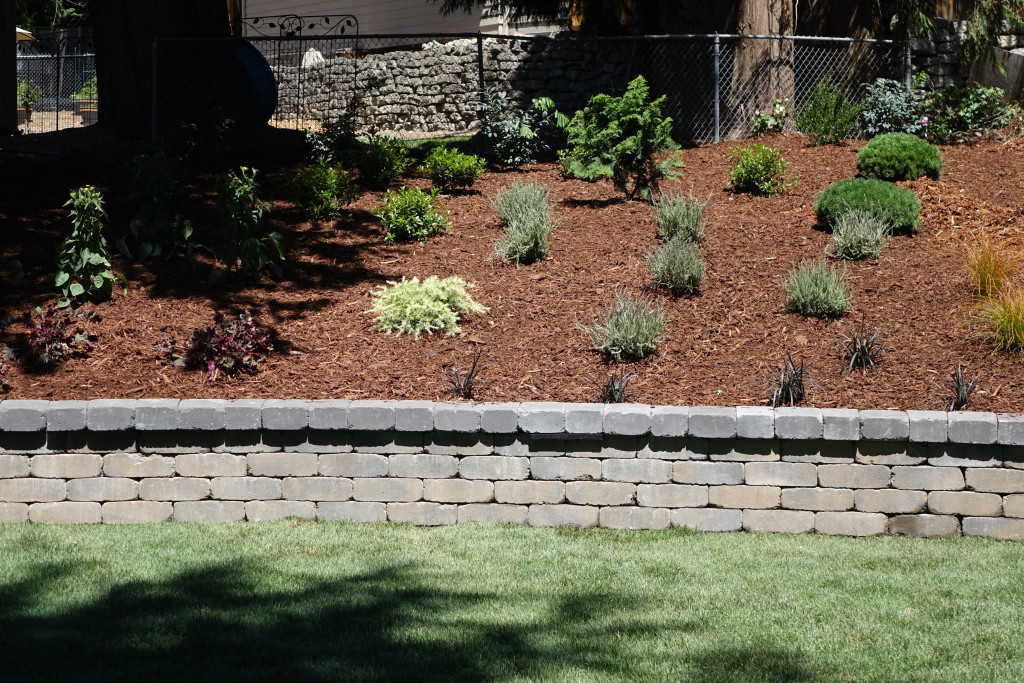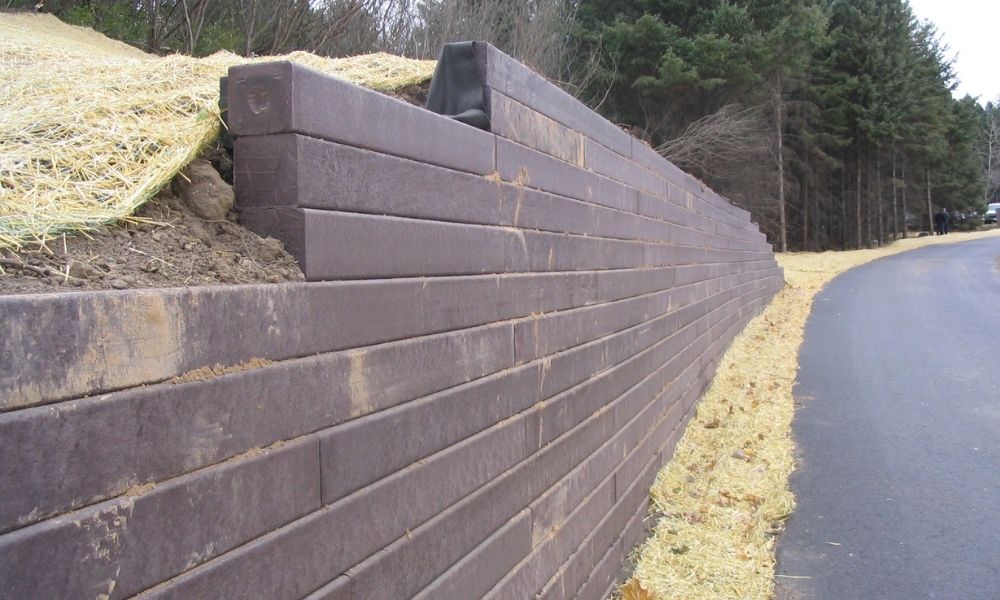Secret Considerations for Building Effective Retaining Walls in Your Backyard
When you're taking into consideration building a preserving wall surface in your lawn, it's vital to assume about several key variables. The wall surface's objective, the products you'll use, and the details soil conditions can all influence its efficiency and durability. You'll also require to navigate regional building regulations and strategy for proper drain. Yet exactly how do you guarantee your design not just meets these needs however also boosts your landscape? Allow's check out the vital actions together.
Recognizing the Function of Your Retaining Wall
When you assume about constructing a retaining wall surface, consider its major function: stabilizing soil and preventing disintegration. Retaining walls give crucial support for sloped landscapes, assisting to maintain soil honesty. You'll find they're vital in locations where water drainage might otherwise remove dirt, leading to pricey repair work and landscape damages.
By holding back planet, these walls develop level surfaces for yards, patios, or paths. This not only enhances your backyard's appearances however additionally promotes much better drainage, minimizing water merging in undesirable locations. If you're dealing with steep slopes, a well-constructed retaining wall can protect against landslides, ensuring safety for you and your building.
Inevitably, recognizing the purpose of your retaining wall will guide your design decisions and help you create a functional, sturdy structure that meets your demands. So, take a minute to examine your landscape; it'll repay over time.
Choosing the Right Products
When picking products for your retaining wall, you'll wish to consider sturdiness, aesthetics, and price. Each variable plays a crucial duty in ensuring your wall stands the test of time while looking terrific and fitting your budget. Allow's check out how to make the very best options for your job.
Material Longevity Variables
Selecting the best products is essential for the long life and efficiency of your retaining wall, since their durability straight affects the wall surface's capability to hold up against ecological tensions. Start by considering your regional climate; products like concrete and rock withstand dampness and temperature changes well. If you reside in an area vulnerable to hefty rainfalls, decide for products with great drain homes, like gravel or porous blocks, to prevent water accumulation.
Some products execute better in particular soil kinds, so it's vital to match them accordingly. Selecting long lasting products warranties your retaining wall stands strong, safeguarding your lawn for years to come.
Aesthetic Style Selections
Long lasting materials not just assure your retaining wall surface's structural stability however likewise play a crucial function in its aesthetic charm. Don't fail to remember regarding the wall's form-- curved walls can develop a softer look, while straight lines can feel extra organized. By thoroughly selecting products that line up with your visual vision, you'll improve your outdoor area while ensuring your wall surface stands strong versus the elements.
Cost-Effectiveness Evaluation
Choosing the right products for your retaining wall surface isn't just regarding aesthetics; it's likewise important for your spending plan. When selecting materials, take into consideration both in advance prices and long-lasting resilience. Concrete blocks could be more expensive originally, however their long life can save you money on fixings. On the other hand, lumber can be much more economical yet might require substitute earlier.
Don't fail to remember to consider maintenance expenses as well (OKC Precision Retaining Walls). Some materials, like natural stone, can add appeal and call for less upkeep, while others may need routine treatments
Inevitably, evaluate the benefits and drawbacks of each option versus your spending plan and the wall's intended function. Spending sensibly in products currently can protect against costly concerns down the roadway. Pick products that stabilize cost and performance successfully.
Assessing Dirt Conditions and Drain
As you begin your project, examining soil conditions and drainage is important for the success of your retaining wall. Start by analyzing the sort of soil in your backyard. Sandy dirt drains well but lacks security, while clay dirt can keep wetness, resulting in pressure on your wall surface. Examine the soil's moisture web content by excavating a little hole and observing just how swiftly it dries out.
Next, analyze the slope of your yard. If water naturally flows towards your wall, you'll require to execute a drainage service to stop erosion and stress buildup. Take into consideration setting up perforated pipes or gravel backfill behind the wall surface to promote drain.
Last but not least, observe any type of neighboring trees or plants; their origins can affect dirt security. By understanding your soil problems and executing correct drainage, you'll develop a solid structure for your retaining wall surface that stands the examination of time.
Following Local Building Ordinance
Prior to you begin constructing your retaining wall surface, you require to research local regulations to guarantee compliance. It's vital to comprehend what allows you have to obtain, as this can conserve you from pricey fines or needing to redo your job. Taking these steps seriously will aid you develop a safe and efficient framework.
Research Local Regulations
Comprehending local laws is important when intending your retaining wall job, particularly because constructing codes can vary significantly by place. Start by contacting your local building division or district to discover particular requirements. Look for standards on wall surface elevation, materials, drain systems, and architectural stability. Numerous areas have find more constraints on the kinds of materials you can use and how high you can develop. You'll additionally want to think about the zoning regulations that may impact your job. Overlooking these guidelines can cause costly penalties or the requirement to renovate your job. By doing your research upfront, you can assure your retaining wall surface meets all essential codes and blends effortlessly into your backyard.
Get Needed Licenses
When you have actually looked into neighborhood regulations, the next step is to get the necessary licenses for your retaining wall surface job. This procedure guarantees your wall surface abides by building regulations and safety and security criteria. Connect to your neighborhood structure authority to learn what allows you need. They might require certain strategies or design assessments, particularly for bigger walls. Be prepared to submit in-depth illustrations, including dimensions and products. Don't forget to inspect if your task affects drain or bordering buildings, as these variables may require added permits. Safeguarding the ideal authorizations can save you from expensive penalties or needing to dismantle your wall surface later on. Keep in mind, adhering to the rules now will result in a smoother building experience.

Planning the Layout and Appearance
As you commence planning the layout and aesthetics of your retaining wall surface, think about exactly how it will integrate with the surrounding landscape. Consider the materials you'll make use of-- rock, brick, or concrete-- and just how they'll match your home's architecture and the natural elements in your backyard. Select colors and appearances that blend seamlessly with existing attributes like outdoor patios, pathways, or gardens.
Next, visualize the wall surface's shape and height. Rounded walls can soften an inflexible landscape, while straight lines might share an extra modern appearance. Do not neglect to incorporate plants and greenery around the wall surface for an all-natural touch; this can improve its charm and incorporate it into the environment.
Last but not least, bear in mind capability. Your style must not only be aesthetically pleasing however additionally offer its purpose effectively. By thoughtfully planning these elements, you'll create a retaining wall that boosts your yard's charm while meeting its architectural function.
Computing Height and Thickness Needs
To build a strong retaining wall surface, you need to properly compute its height and density needs based on the soil problems and the height of the incline it will certainly support. Begin by reviewing the slope's angle and the sort of dirt, as various soils put in differing quantities of pressure.
For walls look at here over four feet high, take into consideration a density of a minimum of 12 inches. If the wall is taller, boost the density proportionally to maintain stability.
Next, determine the elevation of the wall surface by gauging the vertical distance it needs to maintain. For every single foot of elevation, you should normally prepare for a density of one-third of the wall surface's elevation.
Always keep in mind to represent added variables like water drainage and backfill, which can affect your wall surface's layout. Proper calculations now ensure your retaining wall stands strong and lasts for many years to find.
Maintenance and Longevity Considerations
While maintaining your retaining wall surface might look like a low priority, overlooking it can result in considerable issues in time. Routine inspections are important; check for cracks, protrudes, or any kind i was reading this of indications of water damage. Dealing with these issues early can conserve you from expensive repairs later on.
Keep an eye on drainage systems, also. Blocked drains pipes can create water to develop, putting in stress on your wall and compromising its stability. Clear debris and assurance proper circulation to preserve long life.
You might additionally intend to reflect on sealing your wall to protect it from wetness and weathering. Relying on the material, this might require reapplication every couple of years.
Lastly, landscape design around your wall surface can sustain its honesty. Stay clear of planting big trees close by, as their origins can undermine the structure. With positive upkeep, your retaining wall can offer you well for many years to find.

Regularly Asked Concerns
Can I Construct a Retaining Wall by Myself, or Should I Hire a Specialist?
You can certainly develop a keeping wall surface yourself if you have the right tools and expertise. Nevertheless, working with a professional assurances it's done appropriately, especially for bigger or more complex structures. Consider your skill level before determining.
What Are the Most Typical Blunders Made When Structure Retaining Walls?
When constructing retaining walls, you might neglect correct water drainage, skip using the best products, or forget support. These common mistakes can cause architectural failing, so take your time and strategy carefully to avoid issues.
Exactly how Do I Know if My Retaining Wall Requirements Reinforcement?
You'll understand your retaining wall surface requires support if you observe splits, leaning, or protruding. Look for water merging behind it or dirt disintegration near the base. Address these indicators quickly to stop more damages.
What Plant kingdom Appropriate for Landscaping Around a Retaining Wall?
When landscape design around a preserving wall surface, take into consideration making use of low-maintenance plants like succulents, decorative yards, or slipping ground covers - OKC Precision Retaining Walls. They'll grow in those problems and include appeal while stopping soil disintegration around your wall
Exactly How Can I Avoid Erosion Around My Retaining Wall?
To prevent disintegration around your retaining wall, you can plant ground cover, usage compost, and mount drain systems. Consistently check for water buildup and change landscaping to reroute runoff far from the wall.